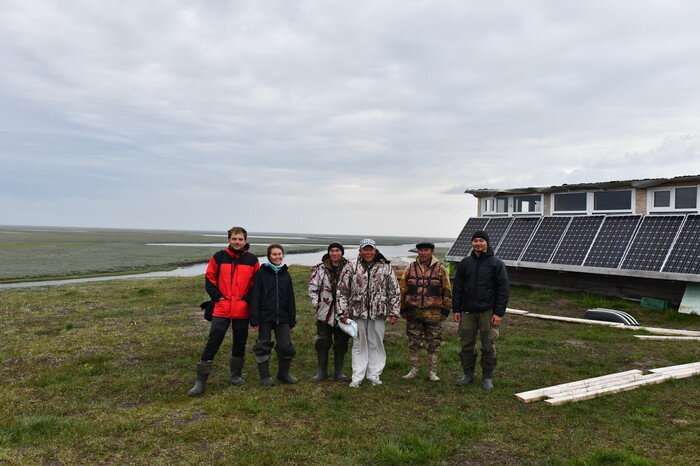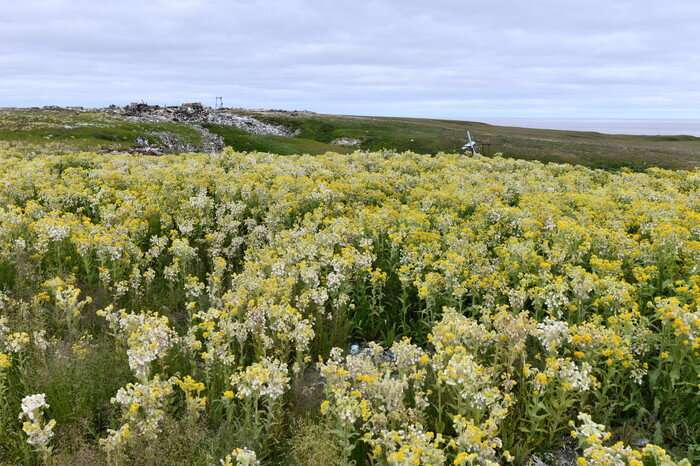Oases have appeared in the Arctic from permafrost thawing

Bio-Geo-Clim laboratory scientists are studying basins of dried-up khasyrei lakes as oases of highly productive ecosystems in the Arctic zone of Russia. During a recent expedition to Yamal, they discovered a new phenomenon: similar oases are also forming in places of active permafrost melting. This was caused by large doses of micro- and macro-elements entering the soil, which stimulates the active growth of herbs and shrubs.
For the project, we worked in the region where the northernmost settlements of Western Siberia are located—this is the 70th parallel north,- explains Sergey Loiko, project manager and senior researcher at the Bio-Geo-Clim laboratory. —At first, places with increased biological productivity of vegetation were studied only in the khasyreis. Soon, however, near the Soyakha village, we found mounds with small lakes between them, covered with lush vegetation, with maximum grass yields higher than in khasyrei. As it turned out, the "outbreak of life" in the tundra occurred due to thermokarst - melting of underground ice with subsequent uneven subsidence of the soil.
The veins of ice were damaged at the moment when sandpits were being dug in these places. Over time, the disturbed permafrost in the process of thawing began to give the soil elements of mineral nutrition, which were contained in deep-frozen layers, and this enriched the soil. The moss-lichen cover, which was disturbed during subsidence, and the greater soil fertility led to the active germination of cereal seeds and forbs, which are carried by wind and animals along the tundra. As a result, the mounds were covered with a carpet of herbs and flowers. In the oases, there were daisies, dandelions, polar poppies, several types of wormwood, cereals, sedge, horsetail, and willow.

Vegetation with a high above-ground portion and a developed root system differs markedly from the surrounding typical tundra. It serves as good food for earthworms that have settled on these mounds and forms a humus layer, further increasing soil fertility. Small lakes located among greening mounds are also enriched with dissolved elements, due to which they are filled with algae and saturated with zooplankton, in an amount that is 6–7 times larger than usual. Scientists have found several similar mounds from human activity, and the productivity of the biosystems is phenomenal for the tundra.
- The local thermokarst is not as scary as it might seem, - said Sergey Loiko. - Arctic species of plants formed in the Pleistocene under the influence of constant moderate disturbances associated with the influence of mammoth fauna. The local flora is well adapted to this. Moreover, a moderate external impact sometimes acts as a kind of catalyst that triggers vegetative processes. Permafrost thawing is undesirable, though, in terms of impact on infrastructure, for example, this can lead to damage to roads. It is becoming increasingly apparent that the climatic potential of the Arctic zone of the Russian Federation is greatly underestimated. The phenomenon that we found suggests that even in the conditions of a short growing season (in the tundra it is about two months), you can get a rich harvest of grass and shrubs and use them for feed.
As the scientist notes, point disturbances caused by anthropogenic influences can stimulate not only the expansion of the flora but also diversify the fauna. In the coming years, animals may appear in the Arctic zone, which is not typical for this area.
Provided by Tomsk State University